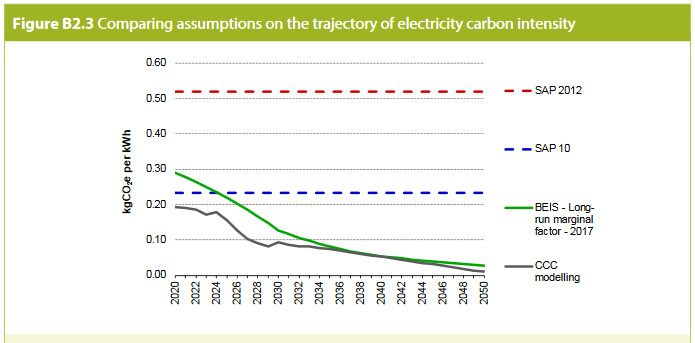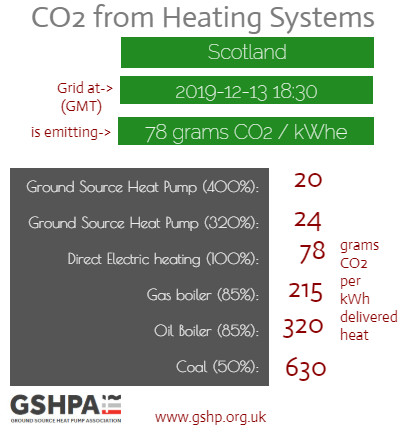UK Housing: Fit for the future?
Committee on Climate Change
21 February 2019
The Committee on Climate Change has published its report on UK housing and presents its key finding: UK homes are not fit for the future.
The CCC reports that, "Greenhouse gas emission reductions from UK housing have stalled, and efforts to adapt the housing stock for higher temperatures, flooding and water scarcity are falling far behind the increase in risk from the changing climate. The quality, design and use of homes across the UK must be improved now to address the challenges of climate change". The report identifies five priorities for government action:
1. Performance and compliance. The way new homes are built and existing homes retrofitted often falls short of design standards. In the long run, consumers pay a heavy price for poor-quality build and retrofit. Greater levels of inspection and stricter enforcement of building standards are required, alongside stiffer penalties for non-compliance. The 'as-built' performance of homes, for example how thermally efficient they are, must also be better monitored. Closing the energy use performance gap in new homes (the difference between how they are designed and how they actually perform) could save between £70 and £260 in energy bills per household per year.
2. Skills gap. The chopping and changing of Government policy has inhibited skills development in housing design, construction and in the installation of new measures. Key steps for the UK in reducing emissions, like the wider deployment of heat pumps, require new skills.
3. Retrofitting existing homes. The 29 million existing homes across the UK must be made low-carbon, low-energy and resilient to a changing climate. This is a UK infrastructure priority and should be supported by HM Treasury. Homes should use low-carbon sources of heating such as heat pumps and heat networks. The uptake of energy efficiency measures such as loft and wall insulation must be increased.
4. Building new homes. There are plans for 1.5 million new UK homes by 2022. These new homes must be built to be low-carbon, energy and water efficient and climate resilient. The costs of building to a specification that achieves the aims set out in this report are not prohibitive, and getting design right from the outset is vastly cheaper than forcing retrofit later. From 2025 at the latest, no new homes should be connected to the gas grid. They should instead be heated through low carbon sources, have ultra-high levels of energy efficiency alongside appropriate ventilation and, where possible, be timber-framed.
5. Finance and funding. There are urgent funding needs which must be addressed now with the support of HM Treasury: low-carbon heating (currently only funded up to 2021), and resources for local authorities, in particular building control.
Householders can also make a big difference with small changes. Even before these actions can be delivered by Government, many householders can make changes immediately to lower their utility bills and improve their homes, for example setting boilers to the correct temperature, installing shading, and increasing insulation.
The CCC makes 36 recommendations for action, including:
- All new homes should be made low-carbon heat ready. By 2025 at the latest, no new homes should connect to the gas grid, and should instead rely on low-carbon heating systems such as heat pumps.
- The Standard Assessment Procedure (SAP) should be reviewed and revised to drive high real-world performance and value properly the benefits of low-carbon technologies. It should formally integrate a forward trajectory for declining grid carbon intensity, in line with Government projections.
- A support framework for low-carbon heating (heat pumps, biomethane, and networked low-carbon heat).
The CCC makes a number of observations, including:
- Biomass for heat is in general not consistent with the long-term best use of limited bioenergy resources except in niche uses.
- Deployment of heat pumps remains very low at around 160,000 heat pumps, with only around 18,000 units sold in 2016.
- Whilst delivery of heat through heat networks appears to be broadly on track with our assessment of what is required to meet future targets, only 7% of heat in these networks currently comes from low-carbon primary fuel sources.
The CCC lists its "Low-regret actions for buildings decarbonisation":
- Heat pumps in buildings not on the gas grid. Heat pumps are the leading low-carbon option for buildings not connected to the gas grid. Together with new build properties, installation of heat pumps in buildings off the gas grid can help create the scale needed for supply chains to develop, potentially in advance of accelerated heat pump roll-out in on-gas grid properties after 2030.
- Low-carbon new build. Installing low-carbon heating from the outset in new homes means that costs of connecting to the gas grid can be avoided and the system designed optimally for the property. This makes heat pumps cheaper to install and run in new homes than in existing gas-heated homes.
- Low-carbon heat networks. District heating schemes require a certain density of heat demand in order to be economic, which means that they are suited to urban areas, new build developments and some rural areas. Low-carbon heat sources can include waste heat, large-scale water-source heat pumps, geothermal heat and potentially hydrogen.
The CCC adds that, "The evidence now indicates that low-carbon heat, and heat pumps specifically, are expected to deliver cost-effective carbon savings in all new build homes by 2025 or earlier".
The CCC discusses the issue of grid carbon factors under the following heading:
The influence of SAP assumptions on the uptake of low-carbon technologies
The Standard Assessment Procedure (SAP), is the methodology used by the Government to assess and compare the energy and environmental performance of dwellings. It is the basis for establishing compliance with Building Regulations, and for Energy Performance Certificates. SAP makes assessments based on a range of assumptions around things like the efficiency of heating systems and the emissions intensity of fuels. These assumptions can have a profound influence on the extent to which low-carbon measures are deployed in homes. There are a number of areas where SAP currently fails to value the benefits of low-carbon technologies properly.

Electricity Carbon Intensity — CCC report February 2019
The first is in relation to emission factors for electricity. SAP calculates the energy and carbon implications of a building component by using a single emissions factor for each fuel. These emission factors reflect the average carbon intensity forecast over 3-5 years following the SAP update - for SAP 2012 the electricity carbon intensity was set at 0.519 kgCO2 per kWh and this carbon intensity still remains the basis of SAP calculations today. In reality, the carbon intensity of electricity has more than halved since 2012, and is projected to fall by over 50% again by 2030. In order to value the benefits of low-carbon technologies properly, it is critical that the methodologies underpinning standards accurately reflect the Government expectations on declining grid carbon intensity over the lifetime of the measures being installed.
Secondly, SAP can materially influence the uptake of low-carbon technologies through the technologies it includes and the assumptions it makes around the efficiency of low-carbon heating systems. Committee assessments of achievable Seasonal Performance Factors (SPFs) for air source heat pumps indicate space heating efficiencies significantly higher than those assumed under the SAP default values. In our fifth carbon budget scenarios, we assume a current SPF of 2.5 for air source heat pumps in retrofit, with potential to increase to 3.0 with learning. For new build, we assume an SPF of 2.75. Recent evidence suggests CCC assumptions may remain pessimistic for new homes.
You may not have time to read the full report published in February 2019, "UK Housing: fit for the future?", which runs to 134 pages.
See Renewable Heating See Renewable Cooling


